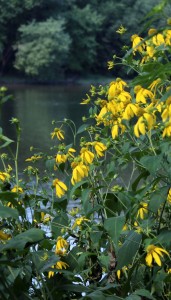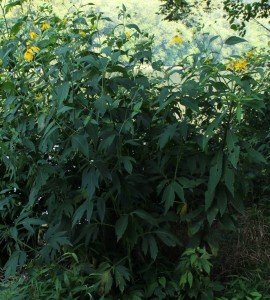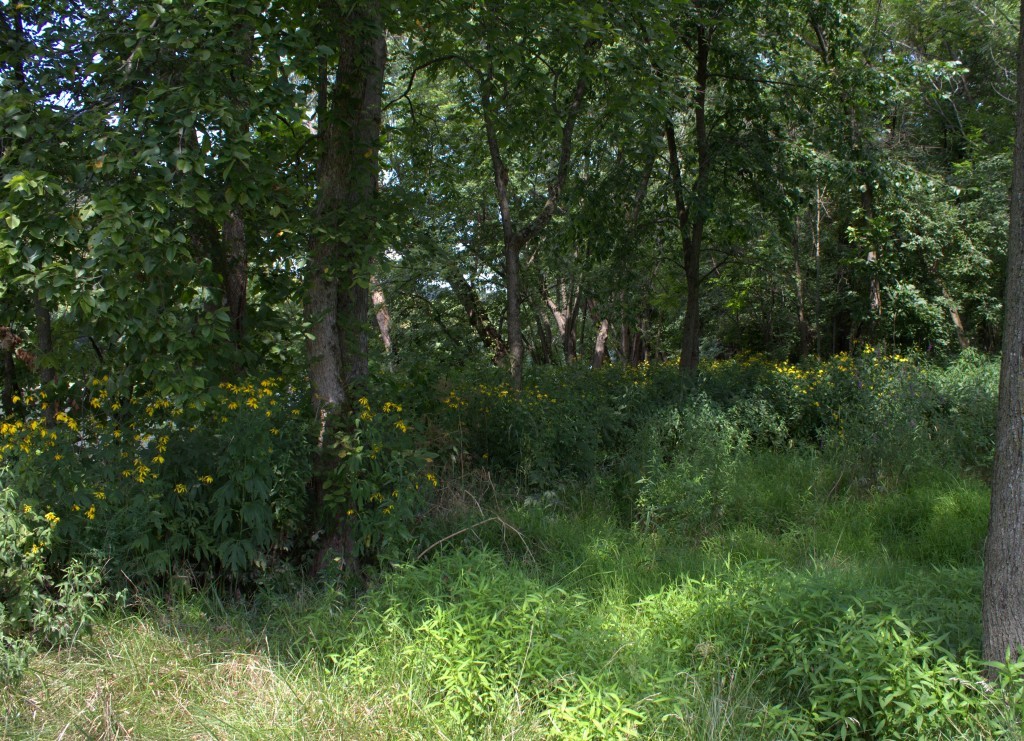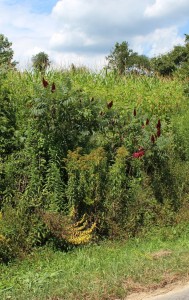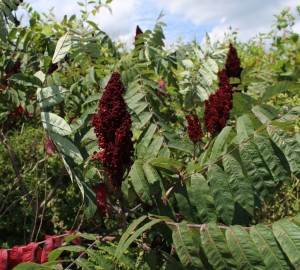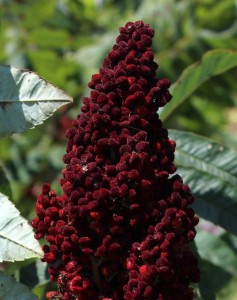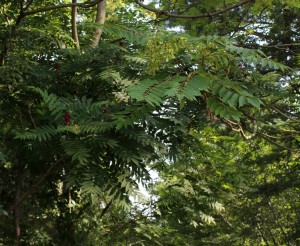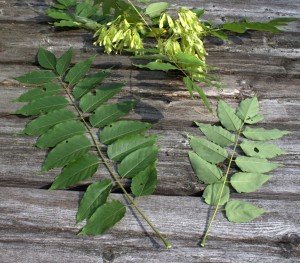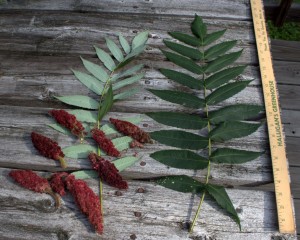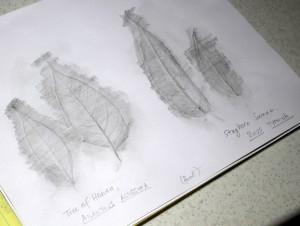How To Know Green-headed Coneflower
Along rivers and streams in our locale of Central Pennsylvania we see lots of sunflowers in the heat of Summer. Some of these sunflowers aren’t technically sunflowers, but their yellow-rayed, composite flowers are similar.
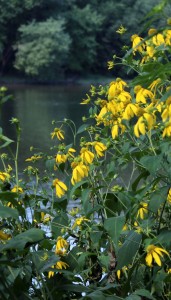
One sunflower look-a-like is the Green-headed Coneflower, Rudbeckia laciniata, that we found in a local park on a river path in Millerstown.
Other places to look for the Green-headed Coneflower include thickets, forest edges, drainage gulleys, and along roads with partial shade.
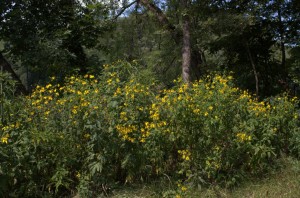
On the banks of the Juniata River many of the blooming sunflowers reached over 6 feet tall, but some of them were shorter and yet still flowering.
It’s not too surprising that the Green-headed Coneflower, Rudbeckia laciniata, can get up to 12 feet tall. We haven’t had a lot of rain lately and surely that would help them grow taller.
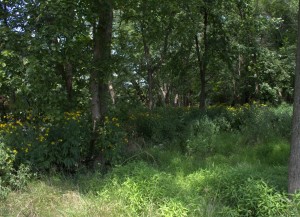
The bright yellow flowers of these tall plants help them to be seen in thickets and well into the woods along the river.
The flower centers are cone-shaped with a green cast.
Yellow petals are usually swept back or pointed downward instead of being held out to the sides. We see this petal shape in the Purple Coneflowers, Echinacea spp., in the garden especially as the flowers mature. Echinacea cone heads are definitely larger than this Rudbeckia sp.
The Green-headed Coneflower flower head is about 3 inches across with bright yellow rays surrounding a central green disk.
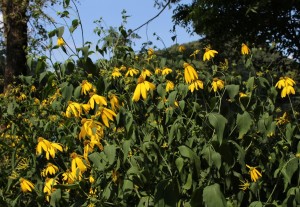
Blooming occurs in mid-Summer to early Autumn from July to September.
The Green-headed Coneflower isn’t the only sunflower that likes to be near a river or partial shady places. Growing nearby was “Wingstem” which looks similar but on closer inspection is quite different.
Each year we can go back to see the coneflowers blooming in summer as they’re perennial herbs. Considering their height some may call them sub-shrubs.
Green-headed Coneflower is also known as Cutleaf Coneflower and it’s a member of the Aster family, Asteraceae. Being a native to the U.S. and Canada it can be found in many locations. Populations in Rhode Island, however, are classified as threatened.
(Click on any image to see a larger view.)
Check the following line drawings for the various leaf shapes of this interesting coneflower.


Peterson’s Wildflower Guide further describes the Green-headed Coneflower as having a “greenish, buttonlike disk, reflexed golden rays, deeply cut 3- or 5-parted leaves. Stems tall, branched, smooth.”


